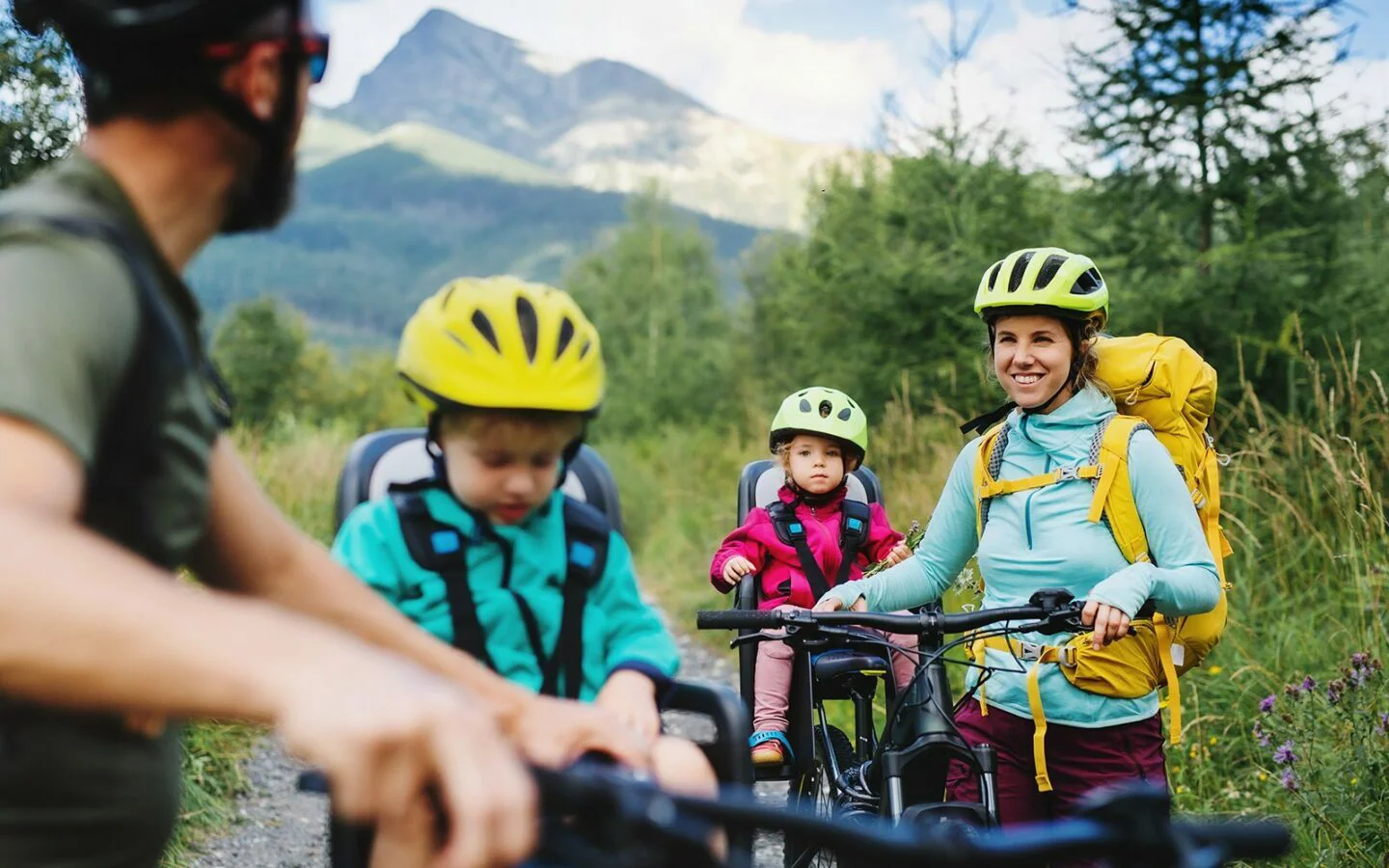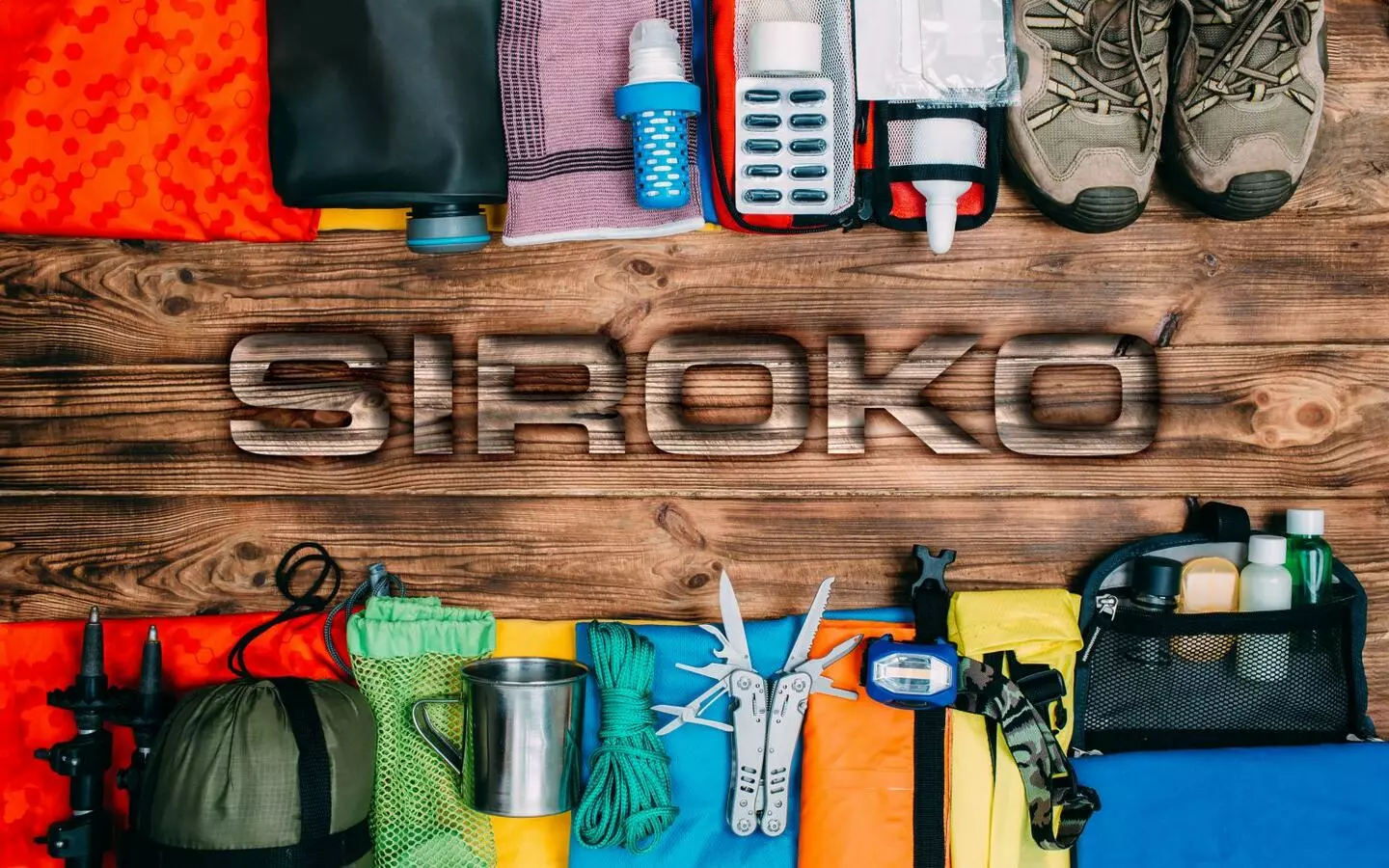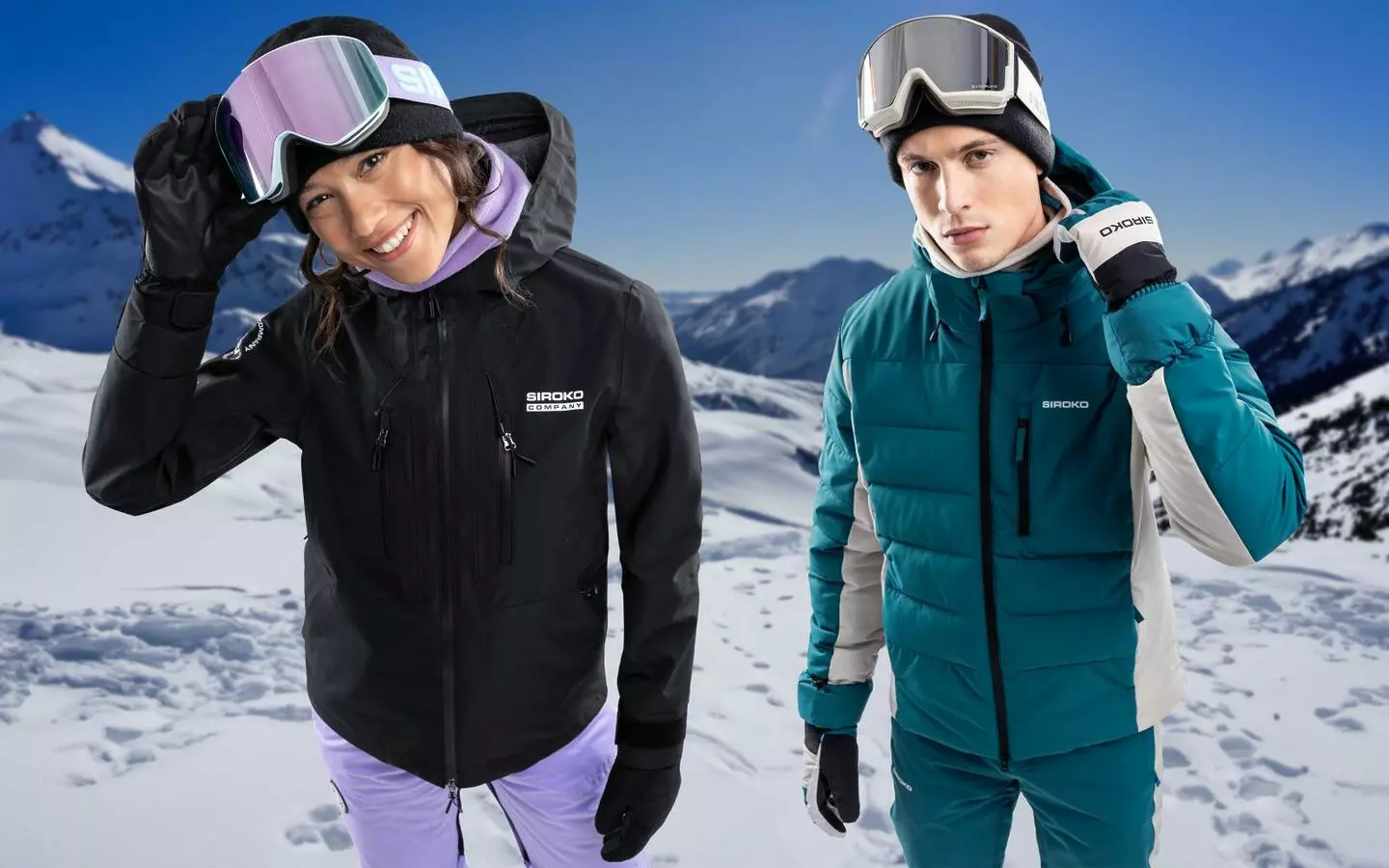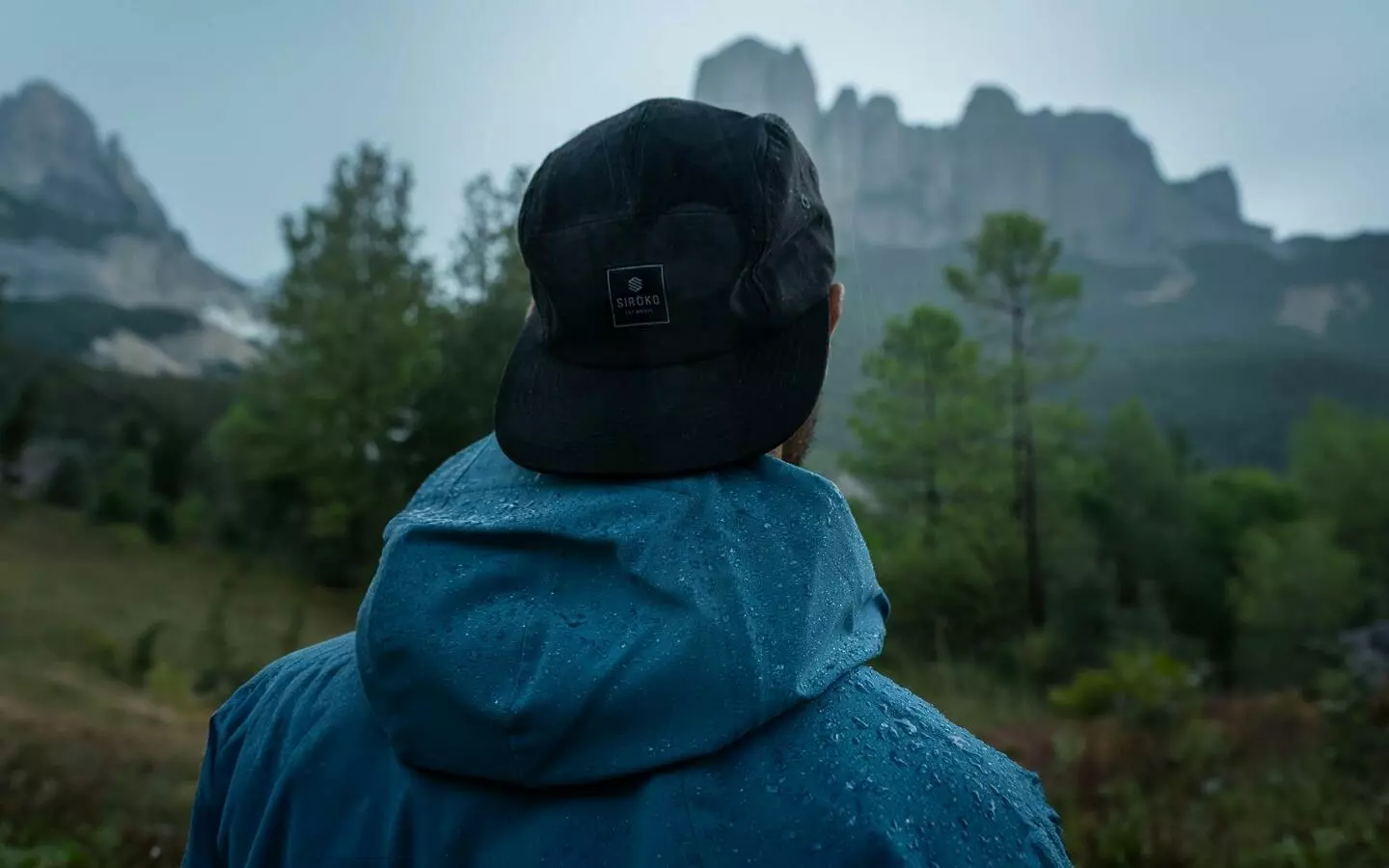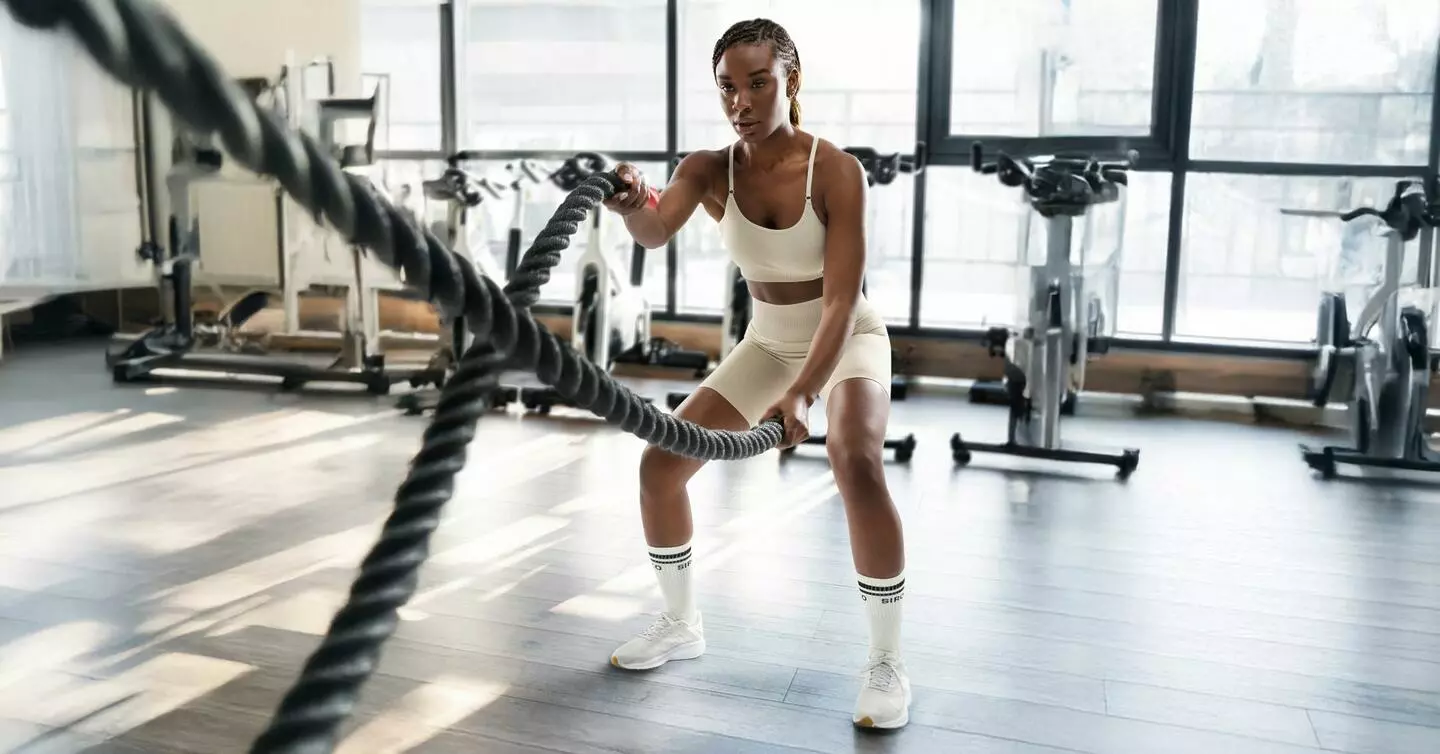Safety always comes first, especially when it comes to children. Here are some tips on how to protect them:
- Regardless of their age, children should always wear helmets. If the adults do so as well, kids tend to complain less and get used to them sooner.
- When riding with children, NEVER carry them on the top tube, handlebar, on your leg, sitting or standing on the rack or in a baby carrier. None of those options are safe. Use specifically designed child bike seats or bike trailers with seat belts, harnesses, and foot pegs; their structure must be developed and approved by authorities to keep children safe.
- As soon as the child starts riding a push bike, they should wear gloves to protect their hands in case they fall.
- Sun protection. Always use sunscreen as children’s skin is very delicate. They should also wear kids’ sunglasses, either standard or cycling-specific ones.
- Protection against the cold. If your kids are in a child seat or trailer, they are not doing any exercise, thus they will feel colder than you do. That is why you should keep them warm and protect them from head to toe.
Let’s start at the very beginning, when children can’t stand on their feet yet and are only able to crawl. If you want to keep using the bike as a means of transportation or exercise, you’ll need to get one of the following accessories:
- Back seat. From 6-9 months of age and up to about 20 kg. Check manufacturer’s recommendations. Back seats are attached to the seatpost or rear rack. It is best to inflate the rear wheel a little more to carry the extra weight.
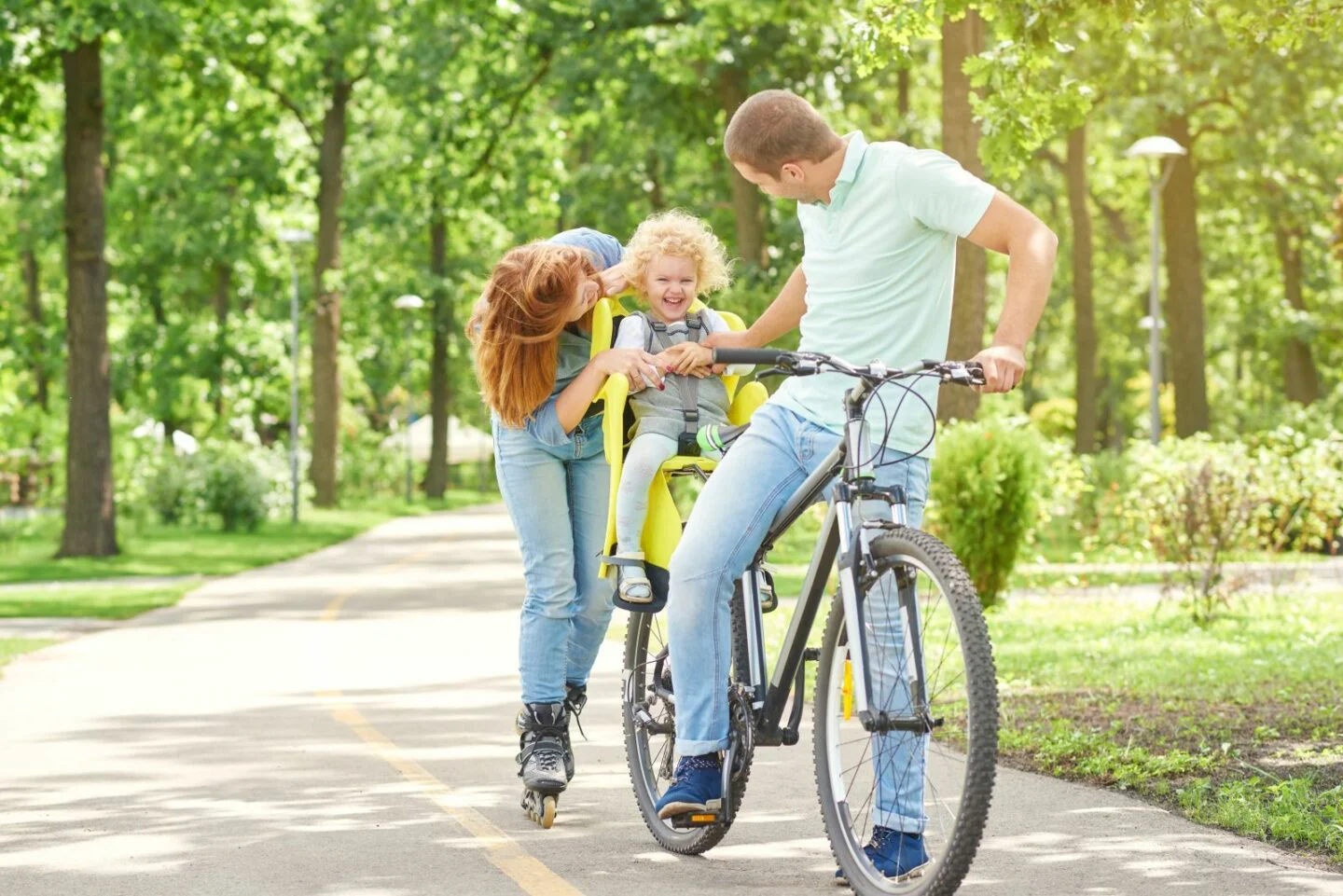
- Advantages:
- They do not interfere with steering or pedaling, which makes them safer.
- They can carry more weight than the front ones.
- They offer better support for the child’s head and neck, making it easier for them to fall asleep.
- They leave the front part of the bike free to carry additional luggage.
- Disadvantages:
- Children only see your back and whatever passes by on the sides. They may get bored and tired of the view.
- You have no direct control over how the young passenger is doing. You have to turn around or stop to see them and give them water or food.
- The bike is a bit more unstable. The extra weight makes it hard to keep your balance when you start and when you’re about to stop.
- Be careful on curves as the center of gravity changes when you carry the child on the back of the bike. Take the turns with caution.
- Front seat. Also from 6-9 months of age. They are placed on the top tube or on the handlebar. They can carry less weight than the back seats. Check the data sheet of the model so as not to exceed the recommended weight. It is best to inflate both wheels a bit more to carry the extra weight.
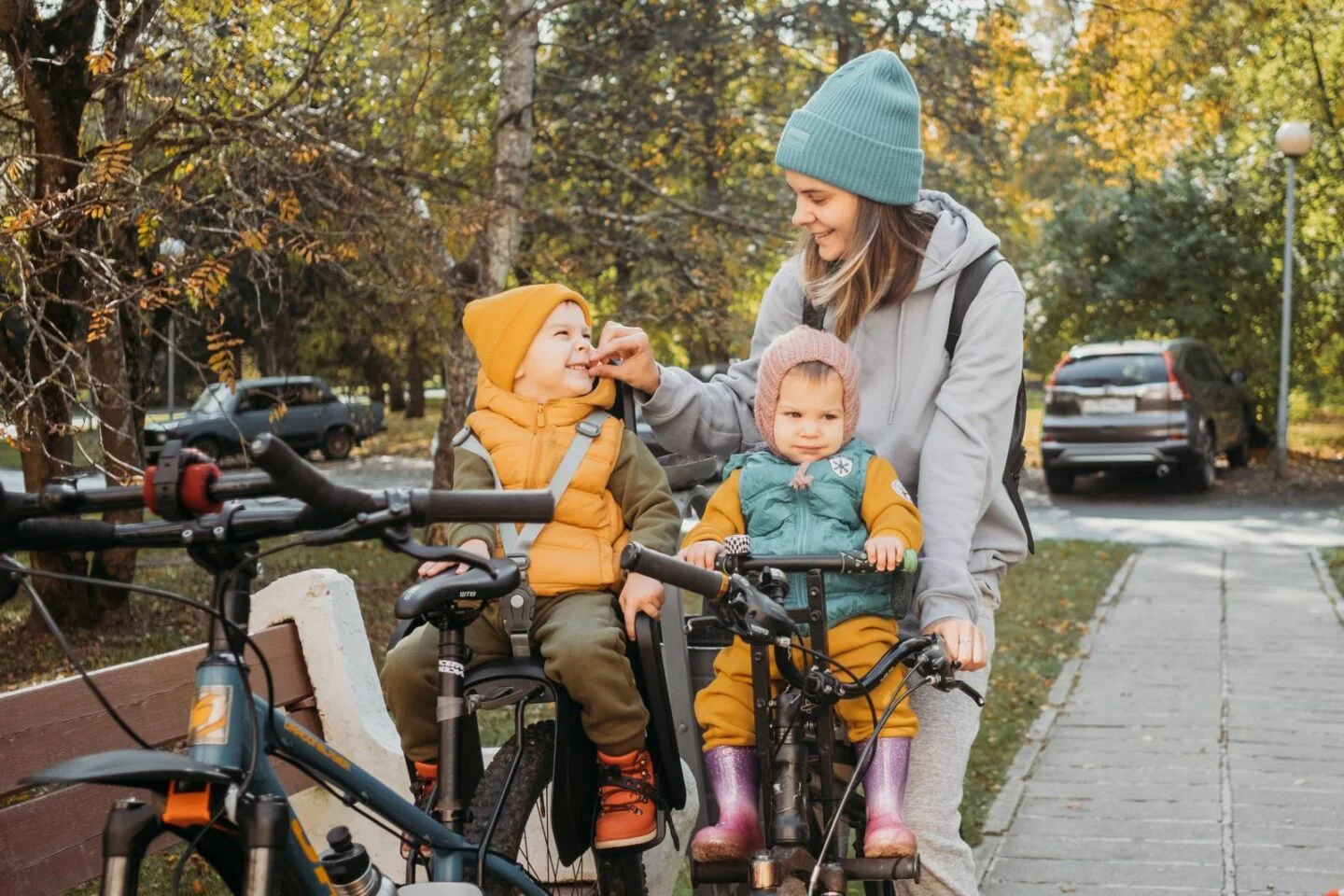
- Advantages:
- Children are watching and enjoying the route just as much as you are.
- It’s easier to keep an eye on your little ones, talk to them, and even give them a drink or food on the go.
- The weight is more evenly distributed and the bike is more stable when taking turns. You get better balance when starting and stopping.
- Disadvantages:
- Some models interfere with pedaling and steering. Depending on the top tube of the bicycle, the front seat system can be uncomfortable and dangerous.
- The child’s face is exposed to wind, dust and insects. You might want to look for models with windshields. Children should wear sunglasses to protect their eyes.
- If they fall asleep, they do not have as much support for the head and neck as in the back seats. Some models offer support for arms and head.
- As they can carry less weight, you may not be able to use them for as long as back seats.
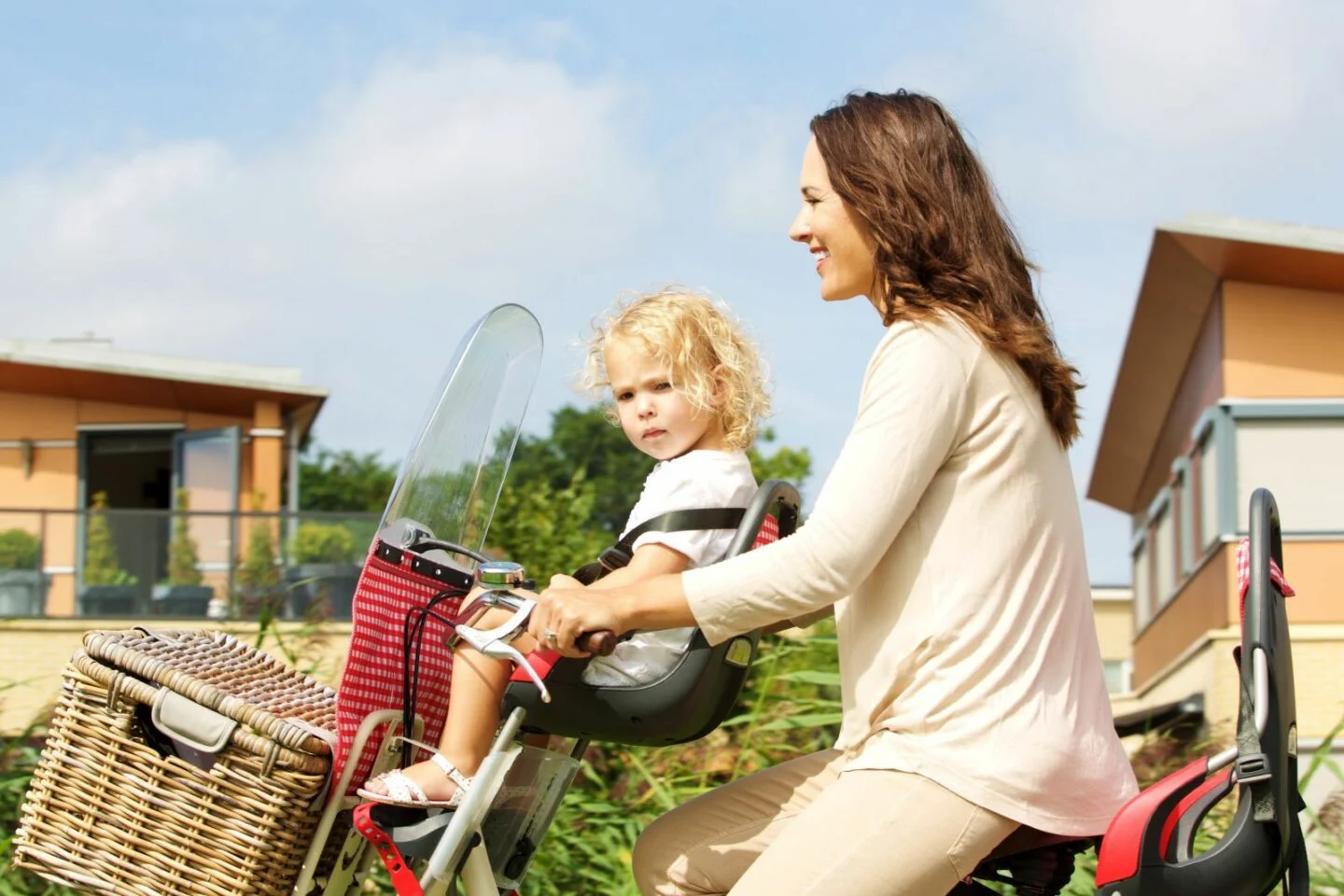
- Bike trailers. Perfect for long routes as well as for family cycling and sightseeing. Highly recommended if you use the bike a lot and you have 2 children of similar age. Available with 1 or 2 seats, and with 1, 2 or 3 wheels. Most of them can be covered to protect the kids in case of rain. Children must wear helmets.
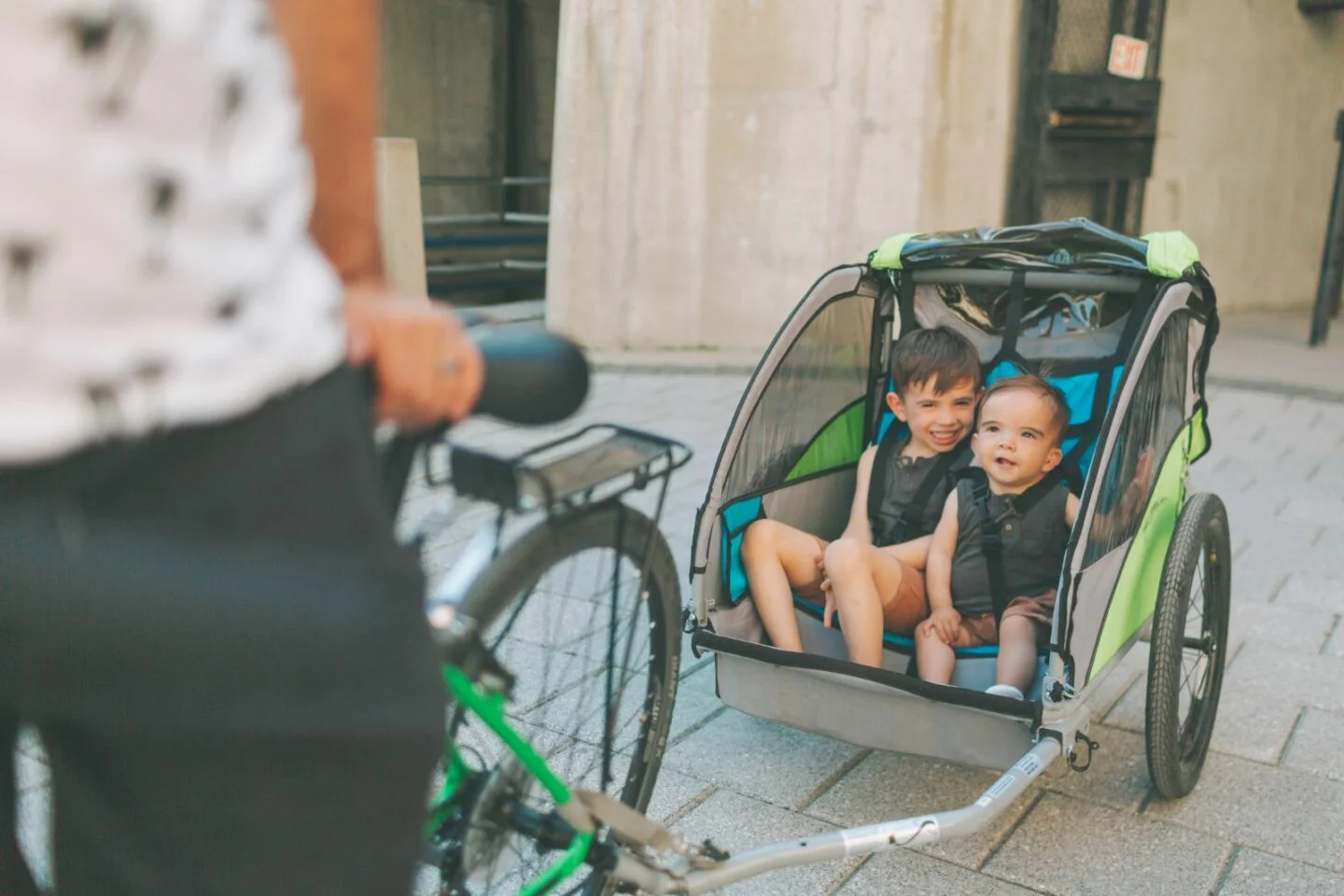
- Advantages:
- They can carry a lot of weight and are a perfect solution when you need to: transport a baby in the car seat, ride with more than one child or a child and a pet, as well as to carry shopping or luggage.
- They will serve you for a long time, from carrying little babies to older kids, and as a simple cargo trailer afterwards.
- The weight is well distributed and the center of gravity is lower, therefore the bike is easier to handle.
- The bike does not carry all the weight so it is less affected by the extra cargo.
- You can get out of the saddle to climb steeper slopes.
- Disadvantages:
- Children are far from your control and surveillance. That’s fine if they are calm and quiet but if they can’t sit still and you always have to keep an eye on them, it can become an inconvenience.
- They take up a lot of space and are very bulky. Not every family has a large house or space to store a bike plus a trailer. If you have to walk up and down stairs or use a small elevator, it is not the best option.
- They are heavier than seats and require more effort from you.
- Where there are wheels, there is a risk of a puncture. You must carry equipment and spare parts to repair the tires and to fix other breakdowns.
Once children grow up and start walking, it is time for them to get their own bike. You will find a section on different types and sizes of children’s bikes according to their age and height in this article. As soon as they have their own bike, they want “independence” and “control” over the situation. We are using quotation marks because playing and riding a bike in the park is one thing, but going on a relatively long route with the family is a whole different story. There are an endless number of systems and options, but we should always make sure that the child can pedal and thus actively participate in the adventure:
- Weehoo trailer. Halfway between a trailer and a tow bar. The child sits and pedals until getting tired. As it is a seat, the child can fall asleep safely and comfortably. Same advantages and disadvantages as in the case of other trailers apply.

- Tow bar. The most popular, the cheapest and the easiest to mount and dismount. It is a bar that connects the seatpost to the child’s bike. Your child can pedal while we pull their bike behind. We can detach it so that they ride on their own and reattach it when they get tired. However, if they fall asleep, they can fall off the bike as the tow bar offers no extra support.
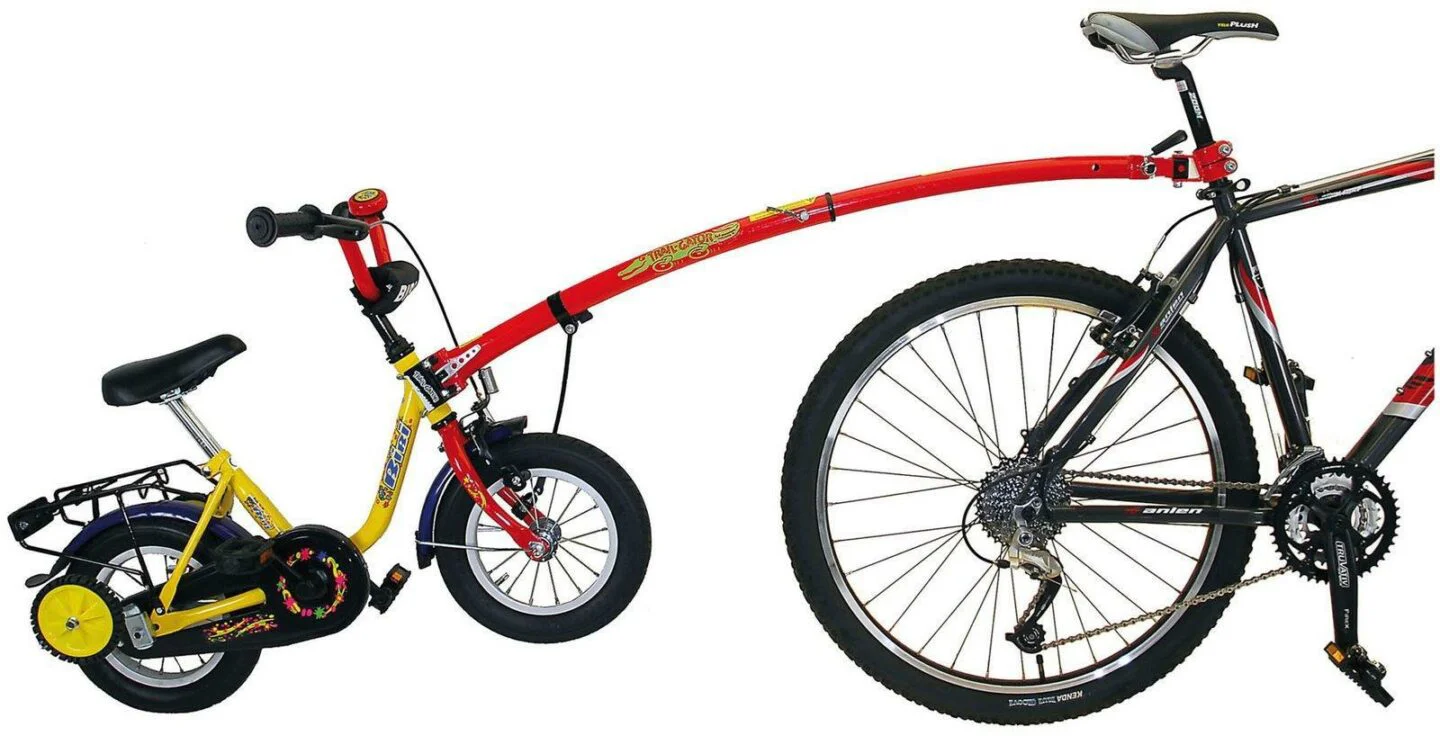
- Follow me. A simple towing system for a child’s bike that is not attached to the seatpost and allows for the use of a back seat at the same time. Somewhat more complicated to mount and dismount, but it is more stable than the tow bar and kids’ pedaling experience is more realistic.
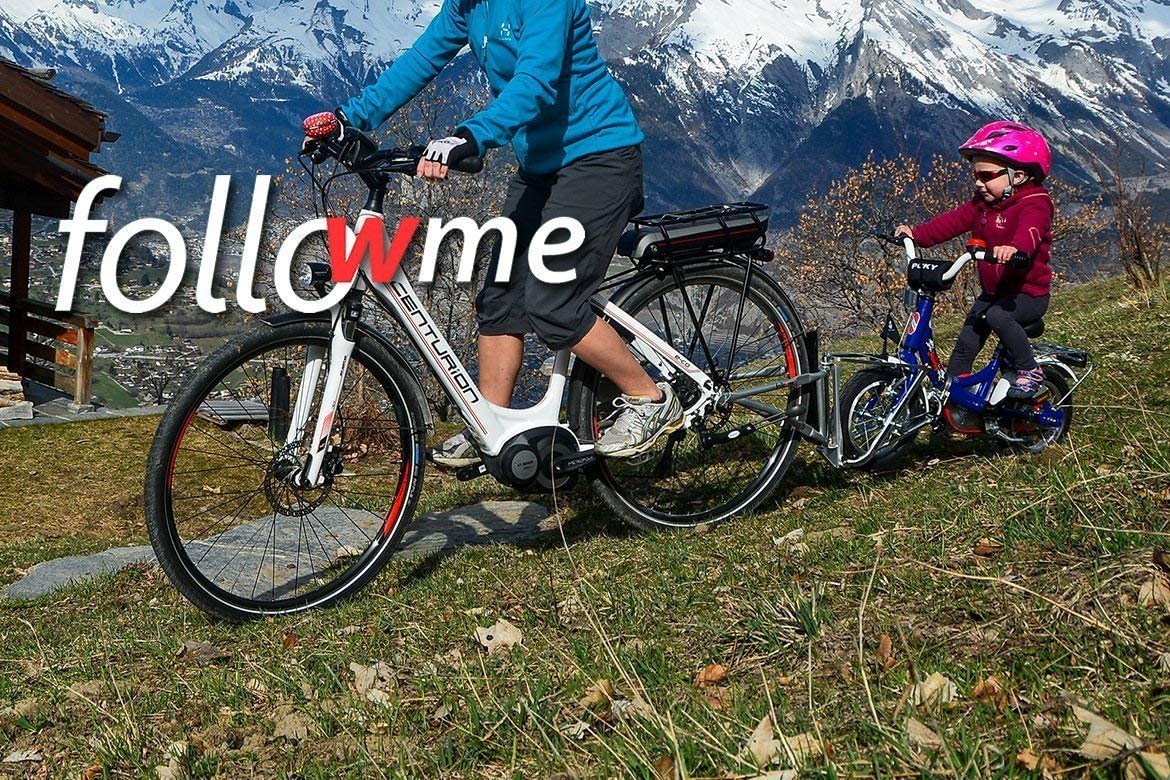
- Tow rope. Perfect for mountain biking and when our child has enough skill and strength to ride on mountain roads and trails.
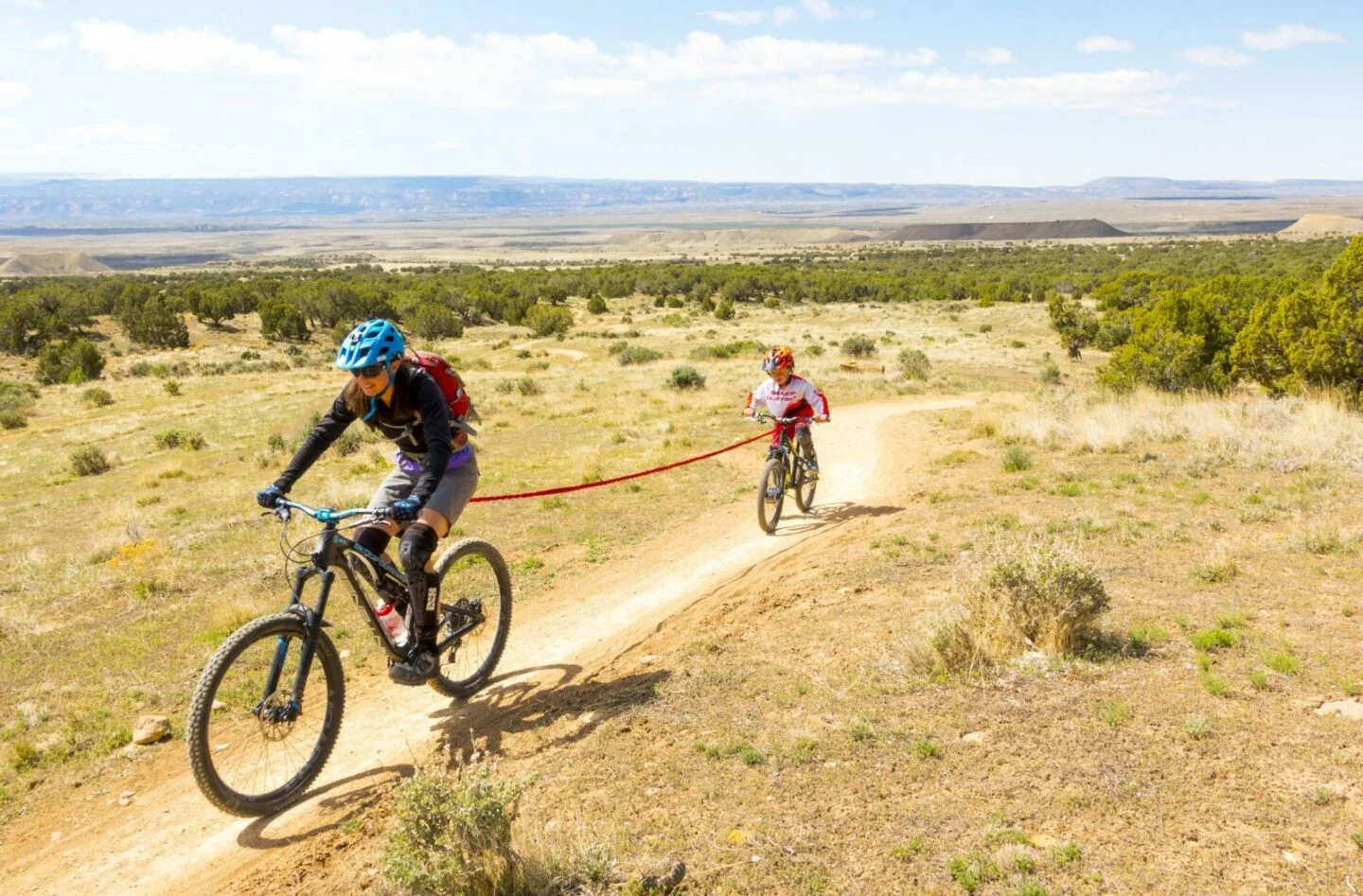
These are the most common ways to ride with our babies and toddlers. At a certain point they become completely independent and don’t need our help. When? It depends on each child, their ability to learn to ride alone, their dexterity, strength and endurance, and, above all, the time they spend on the saddle.
